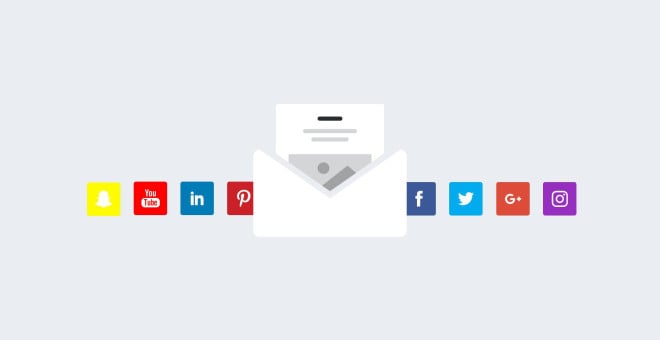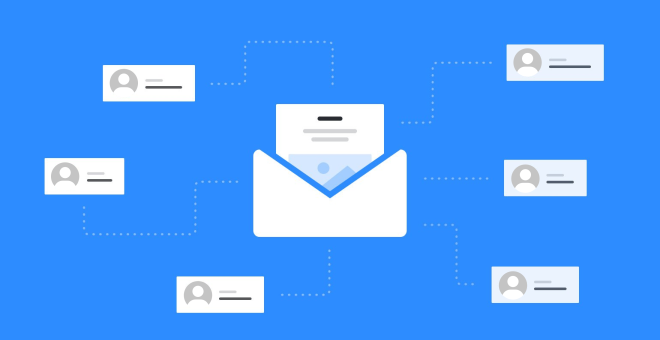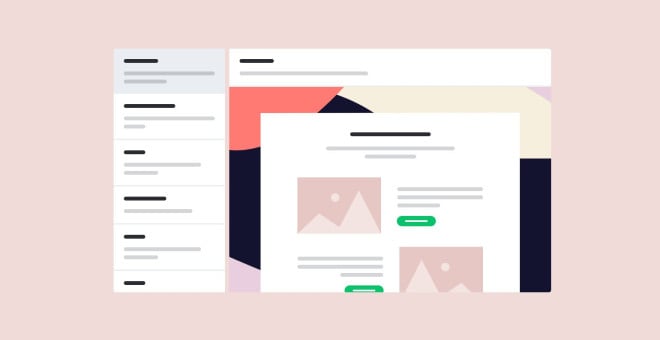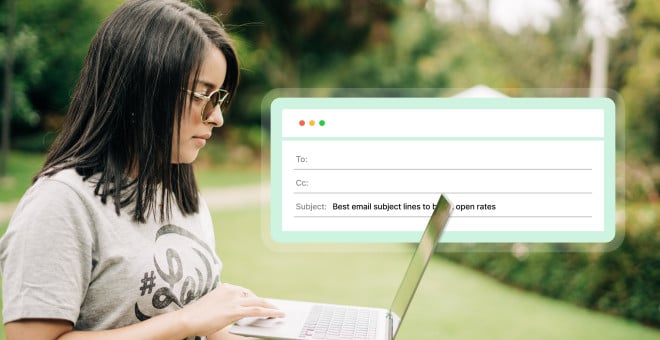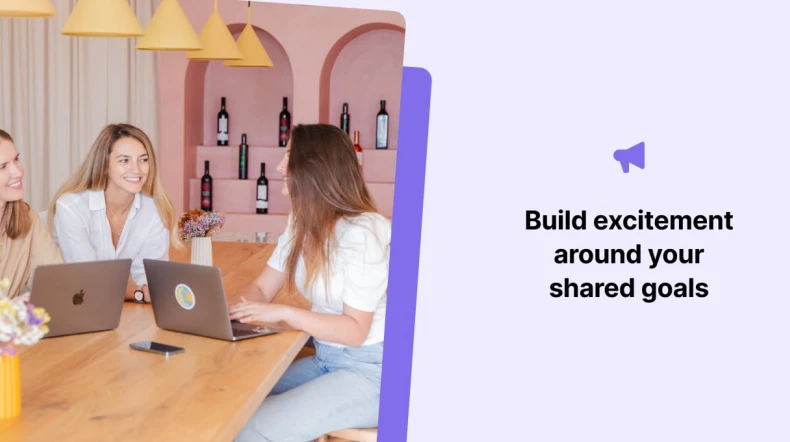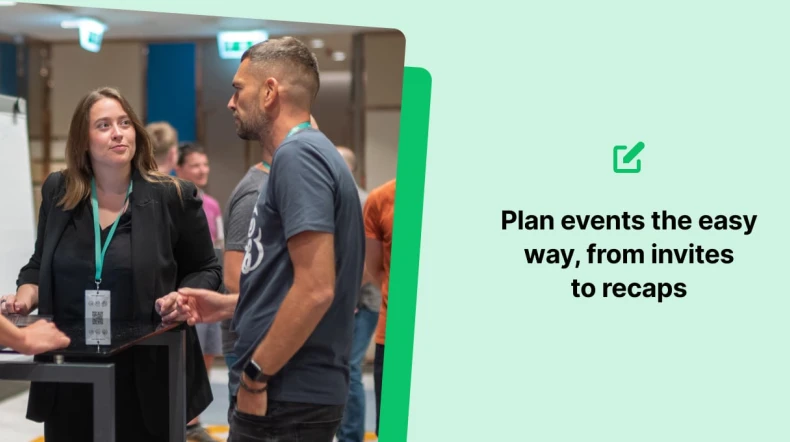Ready for blog fame? How to succeed using email marketing as a blogger
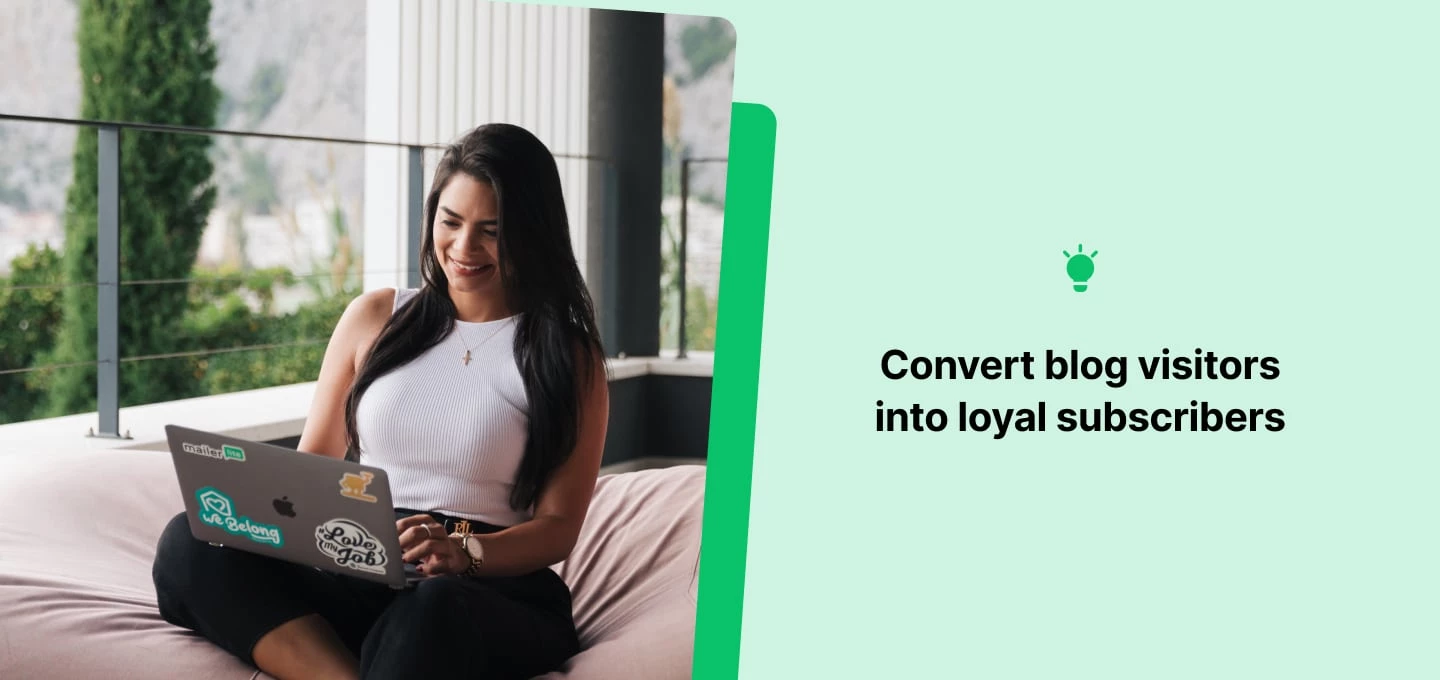
Remember how blogging was once a journaling hobby where people wrote about friends, fashion, pets and family vacations?
I know, because at age 12, my guinea pig got more attention online than it did in real life. But the days of guinea pig blogging for fun have evolved into a legitimate, money-making industry.
Nowadays, anyone who calls themselves a "blogger" is assumed to be someone who works at it full-time, with the digital marketing knowledge to grow their own audience. Every blogger is challenged with finding their online niche and making this audience aware of their content. Luckily, the right marketing tools can make this quest a little easier.
Are you excited to grow your blog and have more people read your content?
Buckle up, we’re about to tell you how you can use email marketing to amp up your blog stats and earn your spot in the blogosphere.
What is email marketing and why should you use it as a blogger?
With social media being all the hype these days, many bloggers go and find their online fame on places like Instagram and Facebook. Though it’s true that these platforms are great to build a following, they also come with a lot of risks.
Facebook algorithm change? Instagram inactive user clean-up? Tweets aren't going out? Say bye-bye to your impressive reach.
The way to build relationships that can overcome a roadblock or two is to communicate via email marketing. Collecting followers using an email list makes sure you get to talk to them directly and whenever you want—without any third-party control.
Email marketing will help your blog gain more popularity by attracting new visitors and engage existing fans.
In this guide, you’ll learn how to build a following, craft email campaigns that skyrocket your blog popularity and correctly measure your newly found success.
Choosing an email marketing tool for your blogger campaigns
With so many email marketing tools on the market, how do you know which one to choose?
Essentially there are two major types of email tools—tools that focus on smaller businesses and tools designed for bigger companies that go beyond email marketing.
The latter includes other features like SMS marketing, advertising, postcards and CRM (to name a few). As a blogger, you don’t really need all these fancy things. And you definitely don't want to pay for them.
And, if you're already on a blogging platform such as WordPress, you'll definitely want a robust solution beyond what a WordPress plugin can offer.
Hence, we’d recommend choosing an email marketing provider that is specifically made for small businesses (like us!). You’ll have all the features at hand to create sophisticated campaigns and avoid paying for features you will not use anyway.
Bloggers love these features:
Drag and drop editor that you’ll get the hang of within no time
Beautiful email templates that save you time designing the
Website builder to easily create your own blog site without coding
Landing pages and pop-ups to help you build your email subscriber list
Personalization features for one-on-one communication with readers
Automated email series that run by themselves
RSS-to-email options to automatically promote your new blog posts
You don’t need to use all of the features above, but it is wise to choose a tool with a complete feature package so your email marketing efforts can keep up with your blog growth.
✅ Sign up for free with an email marketing tool
How to build a blogger email list
Now that you’ve picked your favorite email marketing tool, let’s start with the basics.
Building a blogger email list takes some time, but the reward is that once people signed up for your list, they’re there to stay (if you keep delivering great content, of course).
To start building and growing your blog email list, you need to create awareness and motivate blog readers to subscribe.
Strategically placing your signup forms for your email list
Email marketing software lets you easily create a signup form, either a static or a pop-up form. Once you’ve designed it, you can place it strategically in various places.
These signup form placements can be:
Blog sidebar
Blog footer
Underneath each blog article (or integrated as a content upgrade)
About page
A pop-up on your blog
Integrated on Facebook
As a redirect link in your Instagram biography
On your Medium profile
As a pop-up on your Pinterest page
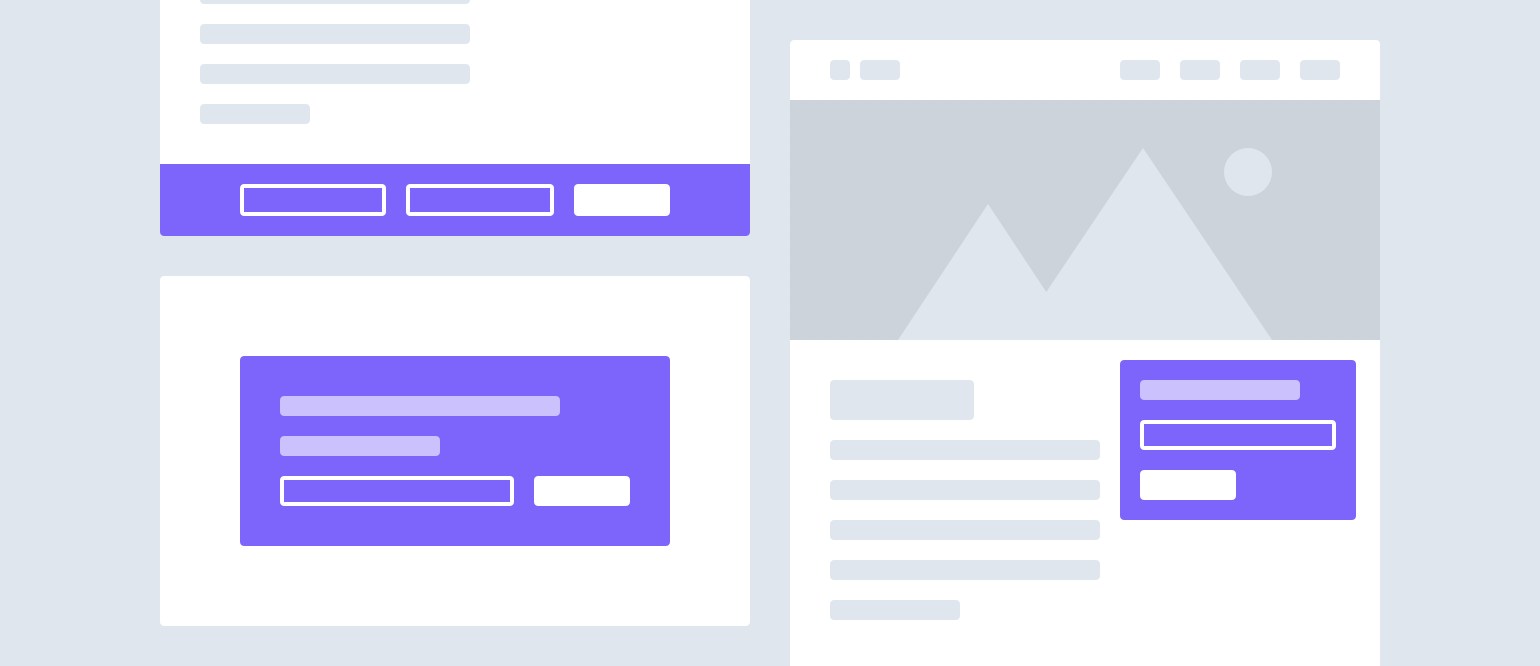
Are pop-ups healthy for your email lists?
A pop-up form does a great job at showing visitors you have an email list. Though readers might not always check your blog sidebar or footer, a pop-up is hard to miss.
Be sure to place your pop-up strategically and set the frequency so readers are just faced with it once or twice (and not constantly).
Social media signups for your email list
Don’t be afraid to promote your signup form on many different places on your website, as well as to include your social media profiles. Integrations for Facebook, WordPress and Medium make it easy to implement your form.
You can also link your signup form on your Instagram, Pinterest, Twitter and any other social media profiles to increase its exposure.
Want to learn more? We go into more detail on how to make email marketing and social media work together like BFFs in this guide.
After you’ve integrated the signup forms, you can start tracking all your new email subscribers. Read on to discover how to boost sign-ups and what email campaigns are worth creating.
Giving freebies to sign up for your email list
We’re not saying you need to give away cars, but you can think of a nice incentive as a motivation for people to sign up for your email list.
As a blogger, you probably have loads of helpful content that can be given away as a freebie, whether it’s blogging tips, a guide on something you’re great at or an eBook. It doesn’t need to be grandiose, as long as it makes your reader go “I need that.”
For mompreneur bloggers, this might be a registry list or vacation packing guide, while entrepreneurial bloggers (like Marie Forleo) can offer free audio training, Search Engine Optimization (SEO) blog checklists or a video course.
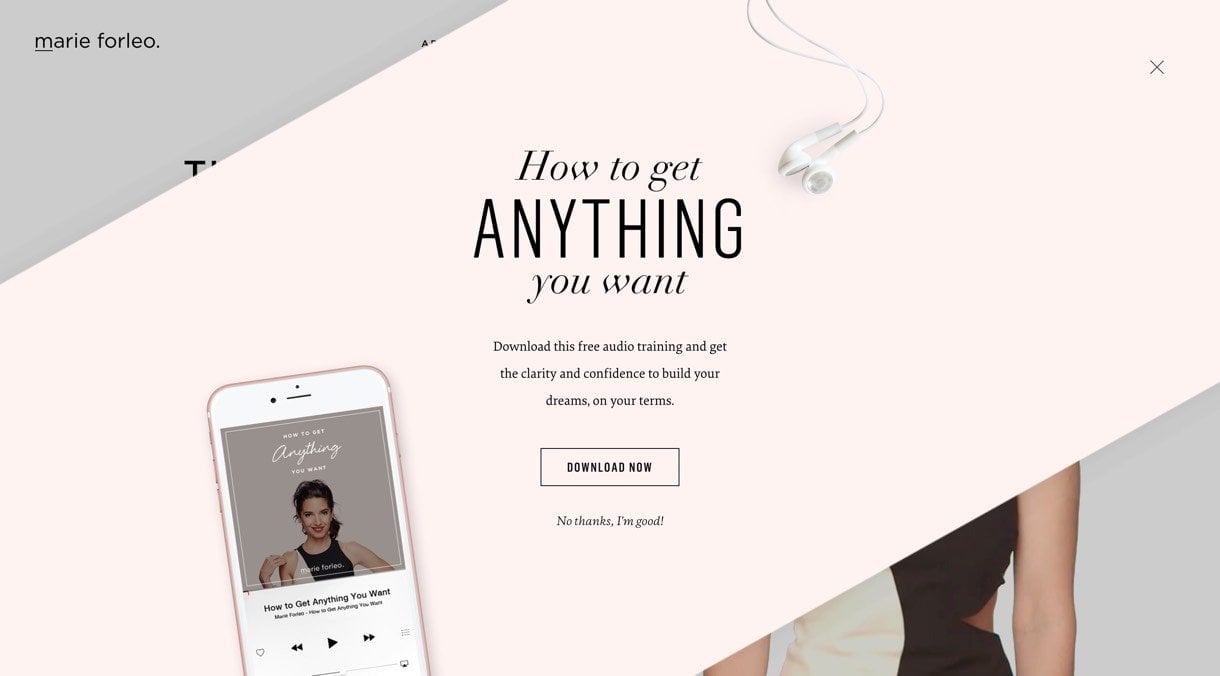
What do you excel at? What know-how could you share with your readers that they’ll love?
Chances are, your newsletter subscribers will vastly increase when the sign-up comes with a bonus.
👉 Tip: Though many people still refer to a sign-up incentive as a freebie, lawfully you can’t promote it as a freebie anymore. Now that the GDPR is in use, incentives are not something given away at no cost, as the subscriber technically pays with their data.
✅ Create a signup form
✅ Integrate the form on your blog (and social media pages)
✅ Brainstorm and create an incentive to boost sign-ups
To sum it all up, growing a high-quality email list takes time. Never ever buy a list! We share more best practices and tips in this email list building guide.
Getting started with email marketing as a blogger
Now that you’ve got your signup form up and running, it’s time to look at what emails are a must in your step-by-step email journey to blog success.
Step 1. The double opt-in email
Single vs. double opt-in: You probably heard about this.
Single opt-in means that when someone or something (hi bots) subscribes via your form, they’re immediately added to your email list. Just like buying Instagram followers, it’s quick and easy but promises very little quality.
It’s much better to use a double opt-in form.
After signing up, the reader will receive a double opt-in email to confirm their newsletter subscription. Not everyone will confirm, but that’s a good thing.
If they do, you know that these readers are real and want to engage with you. This way, you’ll save money and increase your email success because you’re only sending emails to the folks that want to hear from you.
The double opt-in mail is highly recommended (in the EU it’s even mandatory).
This email is the first contact between you and the reader.
Normally, these emails are short and to the point. There isn’t anything else that needs to be done other than confirming that the subscriber is indeed the owner of the email address.
👉 Tip: Don’t sell anything in this email, your DOI-mail needs to be completely free of sales efforts and advertisements.
Step 2. The welcome email
Why not start a conversation with your new email buddy directly after they’ve confirmed their subscription? This is where autoresponders come in (AKA email automation). The road to successful email marketing starts with making a great first impression, and the welcome email is your opportunity to break the ice and start the relationship off on a high note.
In the welcome email, you can:
Introduce yourself and tell your story
Highlight must-read posts
Tell the reader what they can expect from your newsletters
Ask the subscriber to add you to their contact list (to increase email deliverability)
Ask questions to get to know your new pen pal better
And if you're still stuck and need some inspiration, we've compiled a summary of 15 of the best welcome email examples.
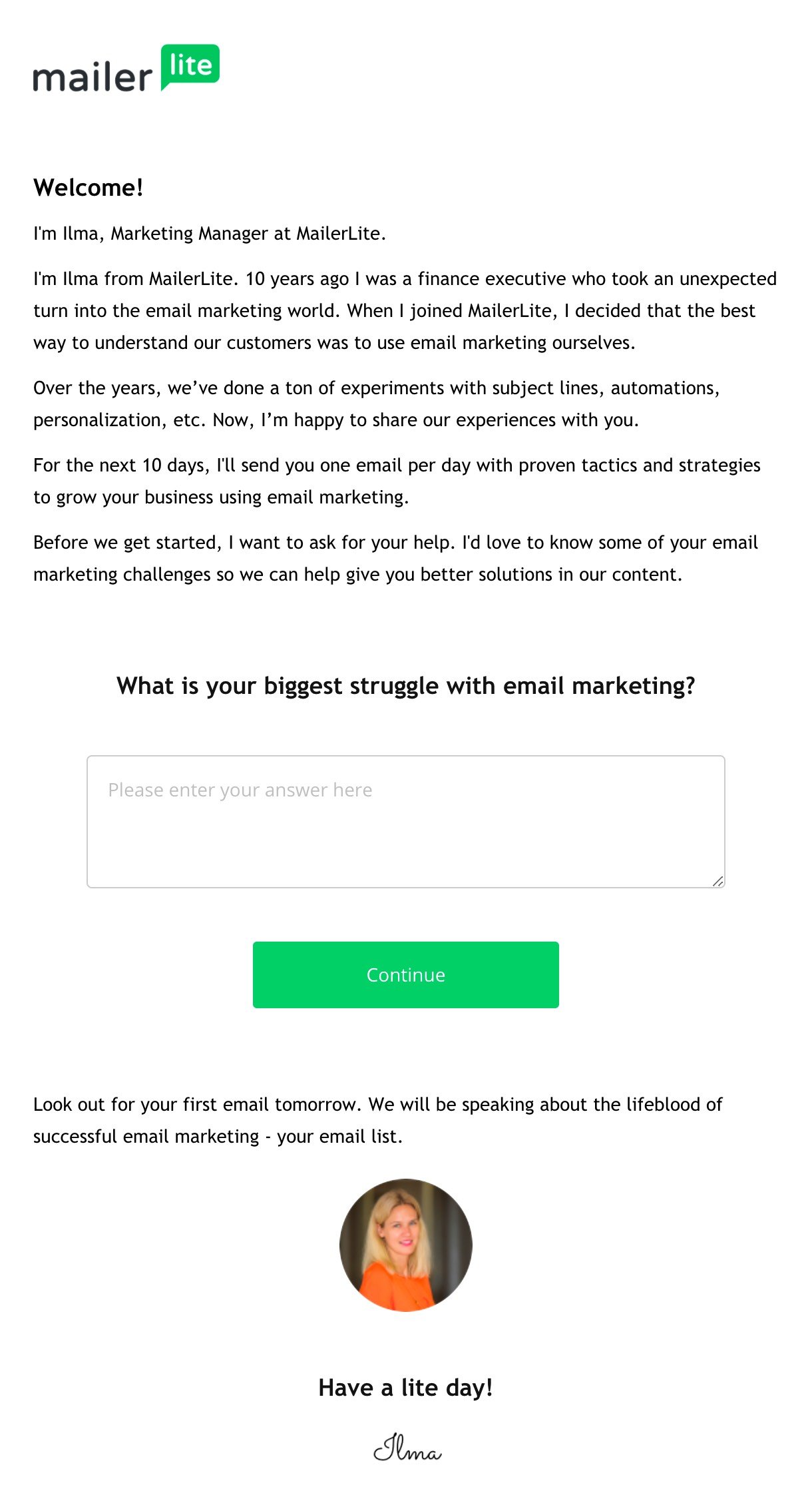
When people subscribe to receive updates from our email marketing blog, they receive this welcome email, which immediately gets the conversation flowing. Reaching out with a question in your welcome email is a great way to start a dialogue!
Step 3. Creating a newsletter concept
You greeted new readers, now it’s time to think about the newsletters that will follow.
Creating a newsletter concept all starts with defining your personal goal of using email marketing.
Do you want to get up close and personal with your fanbase? Or are you looking to grow the number of blog visitors?
Whatever your goal is, keep this in mind when creating your newsletters. It will define whether you’ll send out email content with questions to prompt responses from your readers, or host giveaways to expand your reach (more on this later).
To make your newsletters stand out, you need to get clear on your values and communication style. As a blogger, you’re expressing a part of you. Since people follow your stories, this means that they’re interested in the person behind the screen. Good emails don't just convey information; they tell a story.
How to go about this? Think of what makes you unique.
How can you let your personality shine in your emails?
What tone of voice will you use?
How will you address your readers?
How do you want your readers to feel when they’re reading your content?
Don’t be vanilla trying to please everyone, but take a stand and express your one-of-a-kind personality in your newsletters.
Segment your email lists
At this time it is also smart to think if there are any special groups in your list. Once you get to know your subscribers, you can separate them into lists, based on their interests and preferences.
For example, you can
segment based on:
The favorite topics they indicated in the sign-up form
People that are very active versus not opening at all
Potential leads versus already paying customers
This lets you really personalize your emails to get your audience engaged. Segmented campaigns based on the profile in your database get 54.79% higher clicks than non-segmented campaigns.
So, how do you exactly go about segmenting your blogger subscriber list? Learn more about email list segmentation and why you need it in this guide.
Behavior is pretty strong as well: Visitors that downloaded a PDF, visited a specific page or attended your webinar, you can use all that to segment your emails. Even if you are only making one general newsletter for your blog, show only the topics they are (most) interested in.
👉 Tip: Are you planning to send your newsletters frequently? Create a content calendar to make it easier for you to keep an overview. This way, you can plan your time better and avoid sending too many newsletters shortly after each other.
Talking about sending...
Why don’t you segment your readers based on their location?
Many bloggers have fans from all over the world. As the inbox delivery time does influence the open rate, it’s wise to send your emails when your readers are actually online. Experiment with A/B testing to find the sweet spot for your email campaign.
✅ Create an ad-free double opt-in email
✅ Create your personal welcome email
✅ Define your unique communication style for your emails
Crafting your first blogger email campaign
You’ve got your emails up and running and your subscriber base is growing. Time for that very first newsletter (can I get a hell yeah?!).
When creating your first blogger email newsletter, you want to think about both the design and content.
The design of your blogger email campaign
We love email marketing platforms because they make it so easy for you to send out a professional email campaign.
At MailerLite, you can choose from many pre-built templates. All of these are customizable and offer a great foundation for your personal newsletter.
When designing your newsletter, take this into consideration:
Make the style just like your blog—add your logo, color scheme and use the same font
Don’t make your newsletter too wide (maximum 600 pixels, so it fits on all screens)
Use descriptive titles and bullet points to make your content scannable
Find the right balance between pictures and text
Don’t make your newsletter too long (add a “read on” link to the online version)
Remember the power of three (read the following guide to learn more)
Need a helping hand to design emails that people will actually read? We've got you covered in this guide.
Many bloggers these days also experiment with text-only email campaigns. The design element is kept to the bare minimum, as it’s often just text and one or two pictures.
These layouts give more of an old school “friend sending a friend an email” vibe, which can positively influence your email success and is thus worth a try.
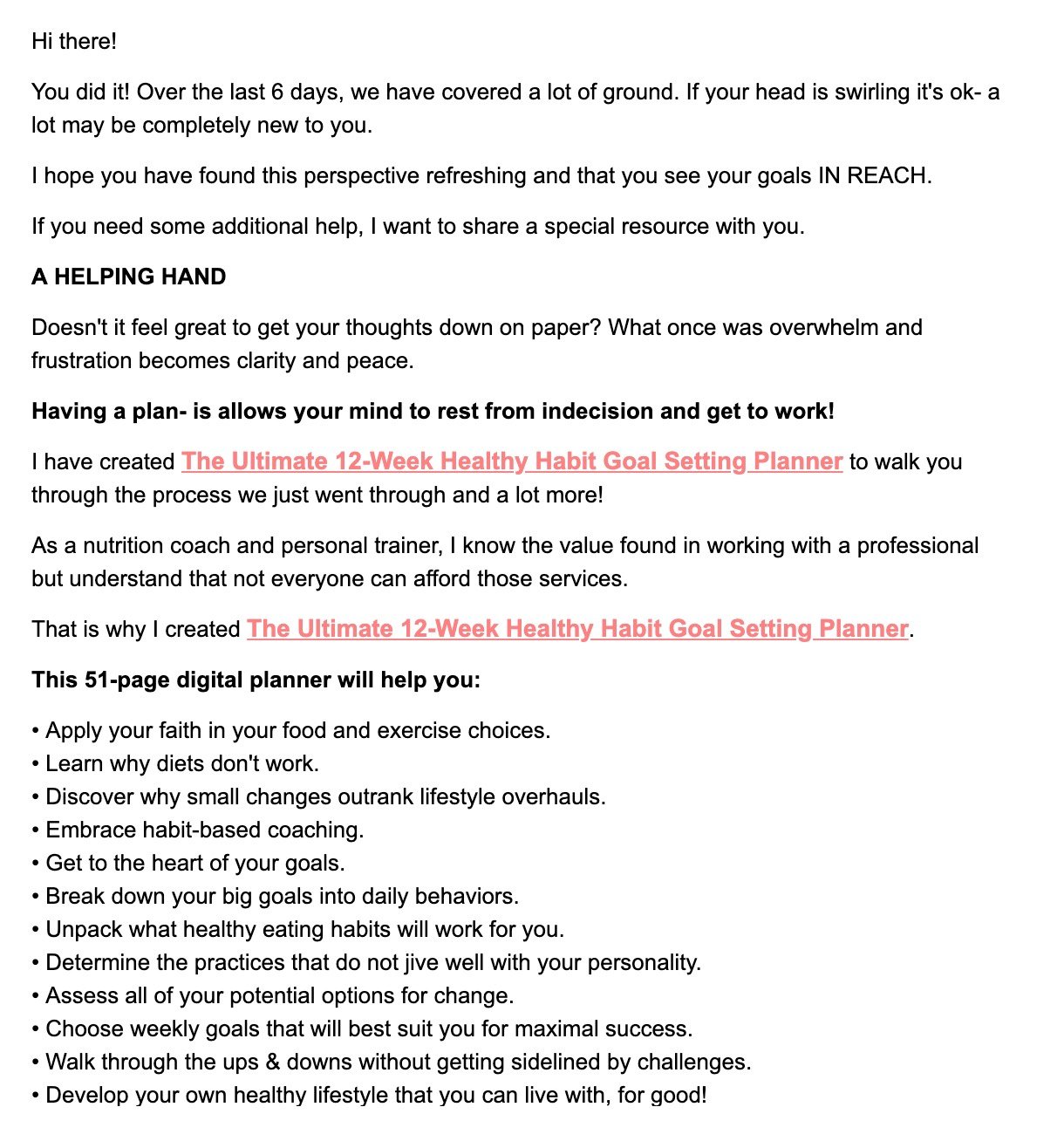
On the other hand, you might decide to go for a different vibe entirely. Some bloggers will utilize different colors, blocks and infographics in their email design, to really make their newsletter stand out. Take a look at this aesthetically pleasing email by from ‘The Organizing Confessions’:
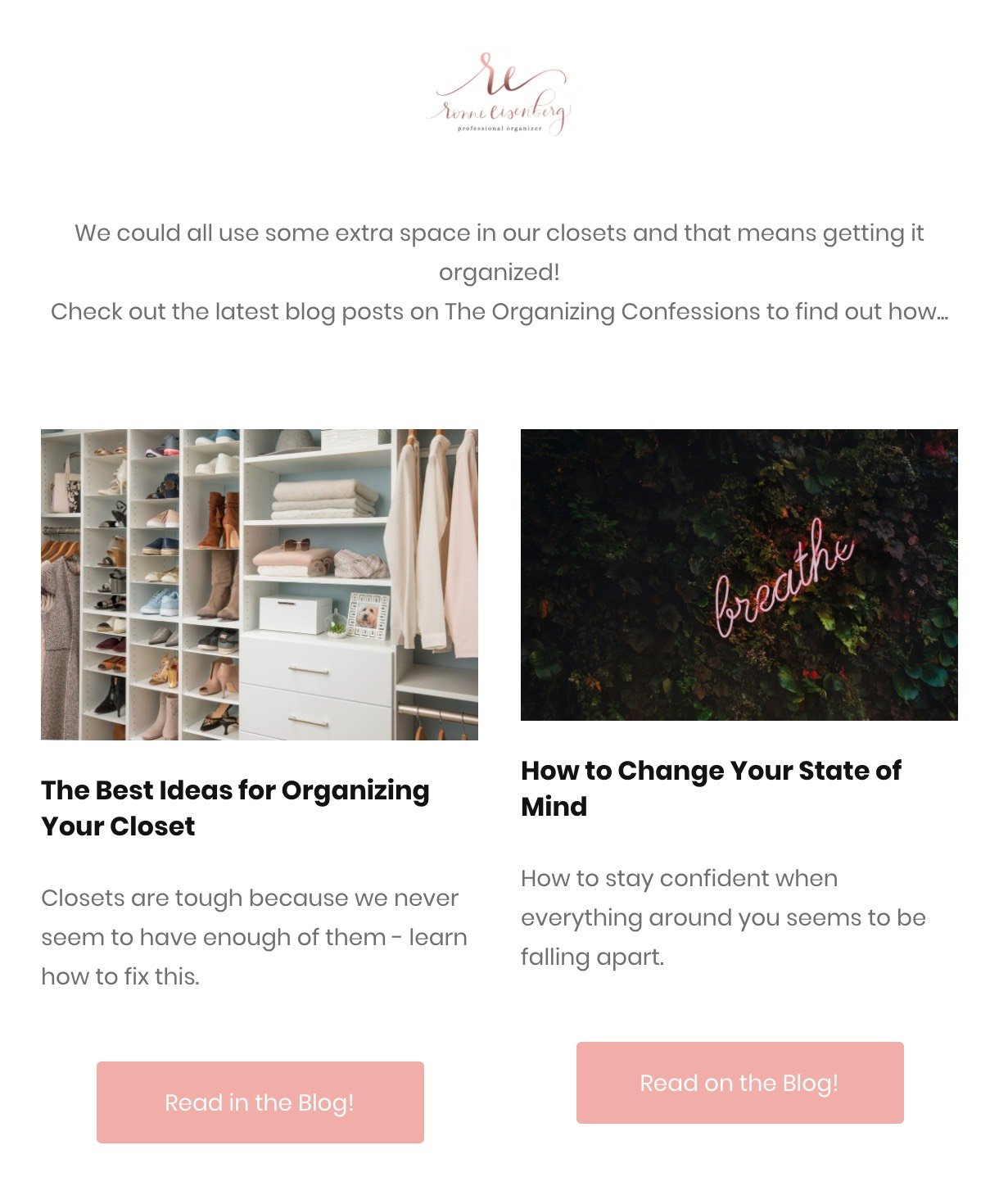
Or, you could go for something bold and dynamic. Have a gander at this newsletter, which was designed for the Alchemy blog. It includes an exclusive recipe within the email and a reminder about upcoming events.

Check out our newsletter template gallery to see examples from bloggers that use MailerLite.
✅ Create a beautiful newsletter template
The content of your blogger email campaign
As for your email content, now is the time to think back about that goal you set earlier. What is the purpose of your first newsletter?
Maybe you want to:
Automatically send out your new blogs weekly using RSS
Promote older blog articles
Create a series of emails (mini-guide or course)
Send a roundup of things you learned/did/read/watched...
Curate content around a topic your readers are interested in
Share a personal essay
Start a conversation with your readers
Host a contest or giveaway
Sell something via e-commerce
Are you stumped for content ideas? The trick is to make your blogger newsletter compelling, absolute must-reads for your subscribers. How do you do that? We reveal all in this handy guide.
Here’s a great example of a newsletter sharing curated content. The writers behind the blog ‘Minimalism and your money’ send a newsletter every Sunday with their top reads of the week. Some of them are from their own blog; others are from elsewhere. This is a great way to promote other bloggers, whilst sharing great content that is tailored to the interests of their target audience.
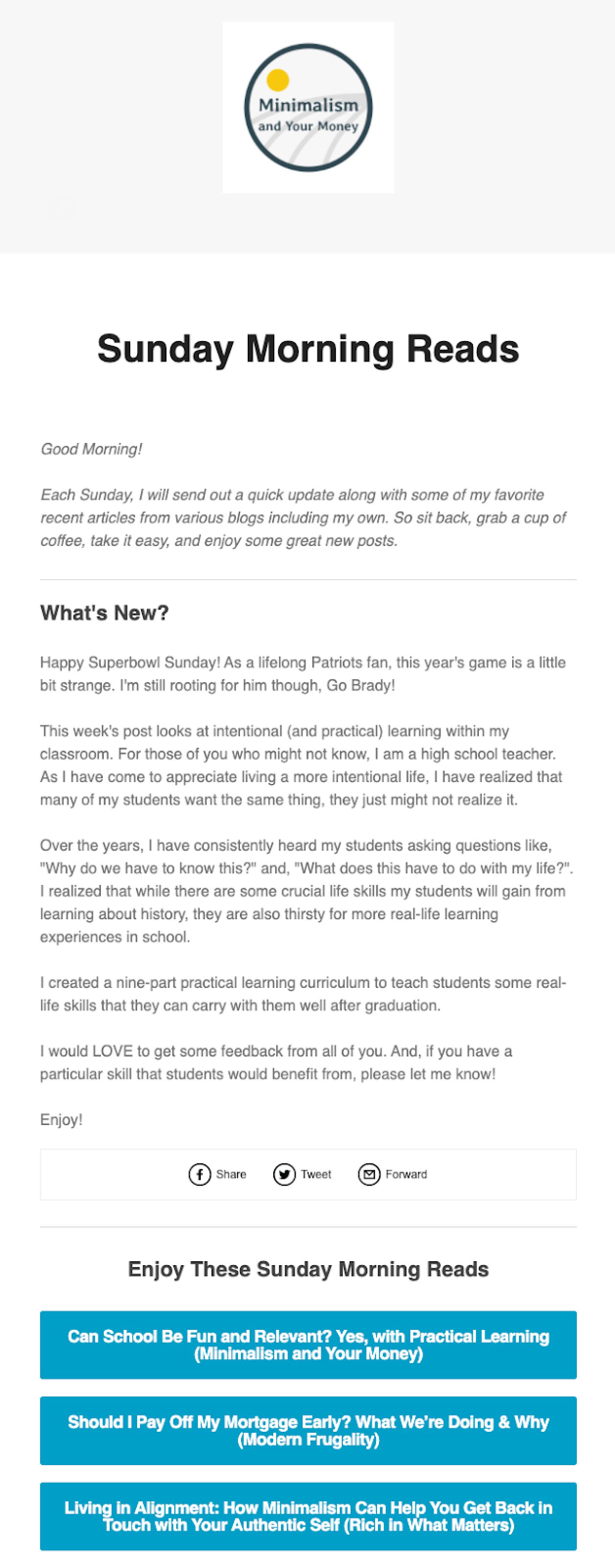
Start with your goal and then brainstorm newsletter content that could help you achieve your destination. You can sync the content from your blog and social media channels and integrate these topics in your newsletter, or choose to send email-exclusive content.
Don’t forget, because you’re talking directly to each individual subscriber, you can get really personal!
Many bloggers love the RSS campaign feature.
With RSS to email, you enter your RSS feed URL, set the sending frequency and number of posts to display and choose a newsletter design. After activation, your new blogs will automatically be sent via email on your preferred interval.
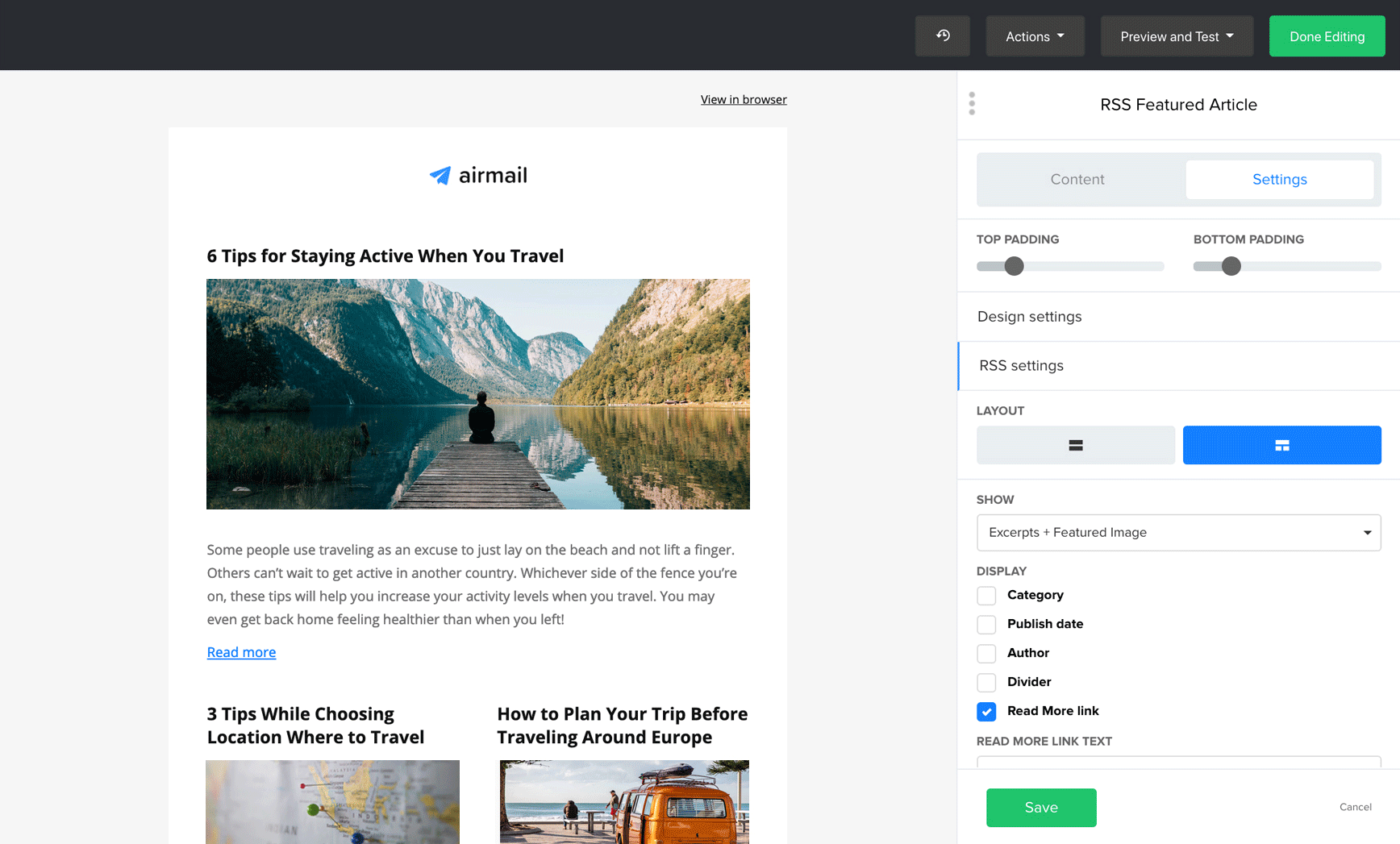
✅ Come up with content for your very first newsletter
✅ Optionally: Create an RSS email campaign
Before sending your newsletter
It’s almost time to hit send, but you’re probably still missing a subject line and the sender information.
As much as we’d like to reveal a long-kept family recipe for creating subject lines that people go nuts over, the truth is, there is no such thing.
There is, however, a lot of trial and error after which you’ll find out what dazzles your audience (the euphoria will be huge, we promise).
To not feel completely lost, use these best practices for writing compelling subject lines:
Personalize it (use your reader’s name, location or interests)
Make it relevant (let the reader know what to expect inside)

To see what makes your readers click, experiment with:
Subject length (40 characters max ensure a correct mobile display)
Emojis
Questions
Numbers and lists
Scarcity or urgency (“24h flash sale”)
Mystery or curiosity (“The one tool every blogger uses revealed”)
Commands
Frequency (when your open rates drop or unsubscribes increase, you’re sending out emails too often)
Sending time (e.g. try mornings, weekends, late nights)
As for the sender information, you can also experiment here.
Some bloggers use their full name, others the name of their blog or go with a “[First name] from [Blog]” construction. We go deeper into subject lines that boost open rates in the following Ultimate guide.
Though the differences in your email stats probably won’t hugely differ, it’s worth tweaking the sender information to find the best performing version by email testing.
✅ Note down what subject line experiments you’d like to try
✅ A/B test different subjects and sender information
Clicked send? How to measure your blog newsletter success
Now that your first blogger newsletter is on its way, you can start tracking your results in your dashboard. With most newsletter tools, like ours, you can track your success in real-time. There are a few stats that are worth analyzing.
Open rate
How many of your subscribers actually opened your email? It’s best to first analyze this a few days after sending, as some folks might read your email first later on.
Don’t expect a 90-100% open rate, this rarely happens to even the best email marketers (unless you’ve just got your excited family on your email list). A good open rate for your first email would be anything above 15%, but just use your first result as the foundation to grow from.
Click rate
Did you want your reader to click anywhere in your blog newsletter? Like a link leading to the full blog article? By looking at the click rate you can check if your call-to-action (CTA) was motivating enough. When your click rate is low (like around 1%), don’t stress, this is normal.
Unsubscribes
This stat tells you if people liked your newsletter or thought it didn’t serve them. It’s normal that some people unsubscribe, but if your number is a lot higher than 1% you probably want to rethink your blog newsletter marketing strategy.
These three stats will give you enough information for now. As a blogger, it’s also interesting to look at the location of your readers. Use this information to create location-based groups and optimize your sending times accordingly.
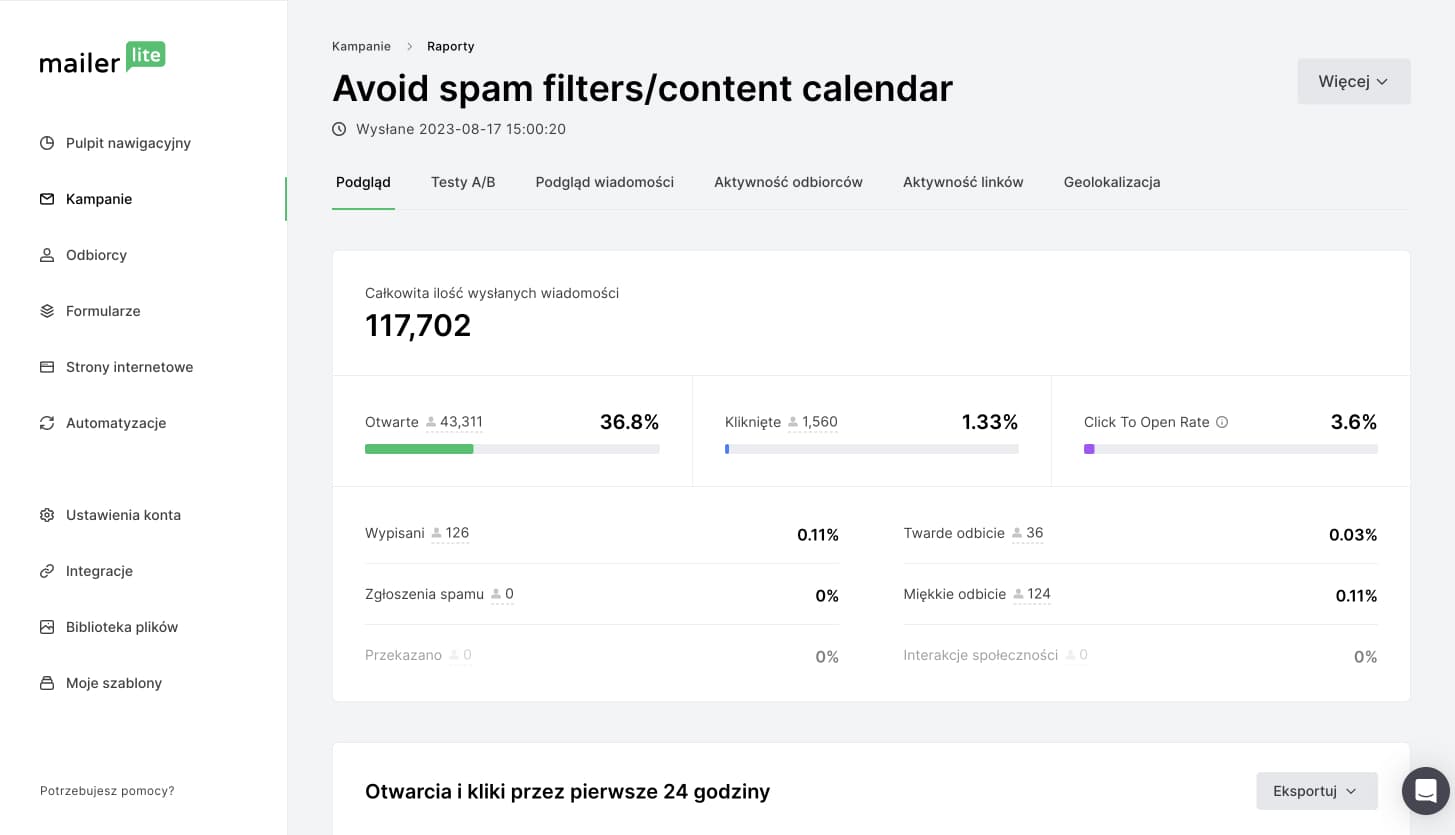
Examples of blogger email marketing done well
Time for some real-life newsletter examples! We've pulled together some case studies so that you can get a better idea of how bloggers use email marketing services.
Example 1. B2B email marketing at its finest
Zapier allows companies to integrate different web apps (there’s also an integration available with MailerLite)! And on their blog, they bring the world of workflows to life.
Because they’re appealing to companies and web builders, their blog content goes beyond automation, and also explores productivity and how people can grow their businesses.
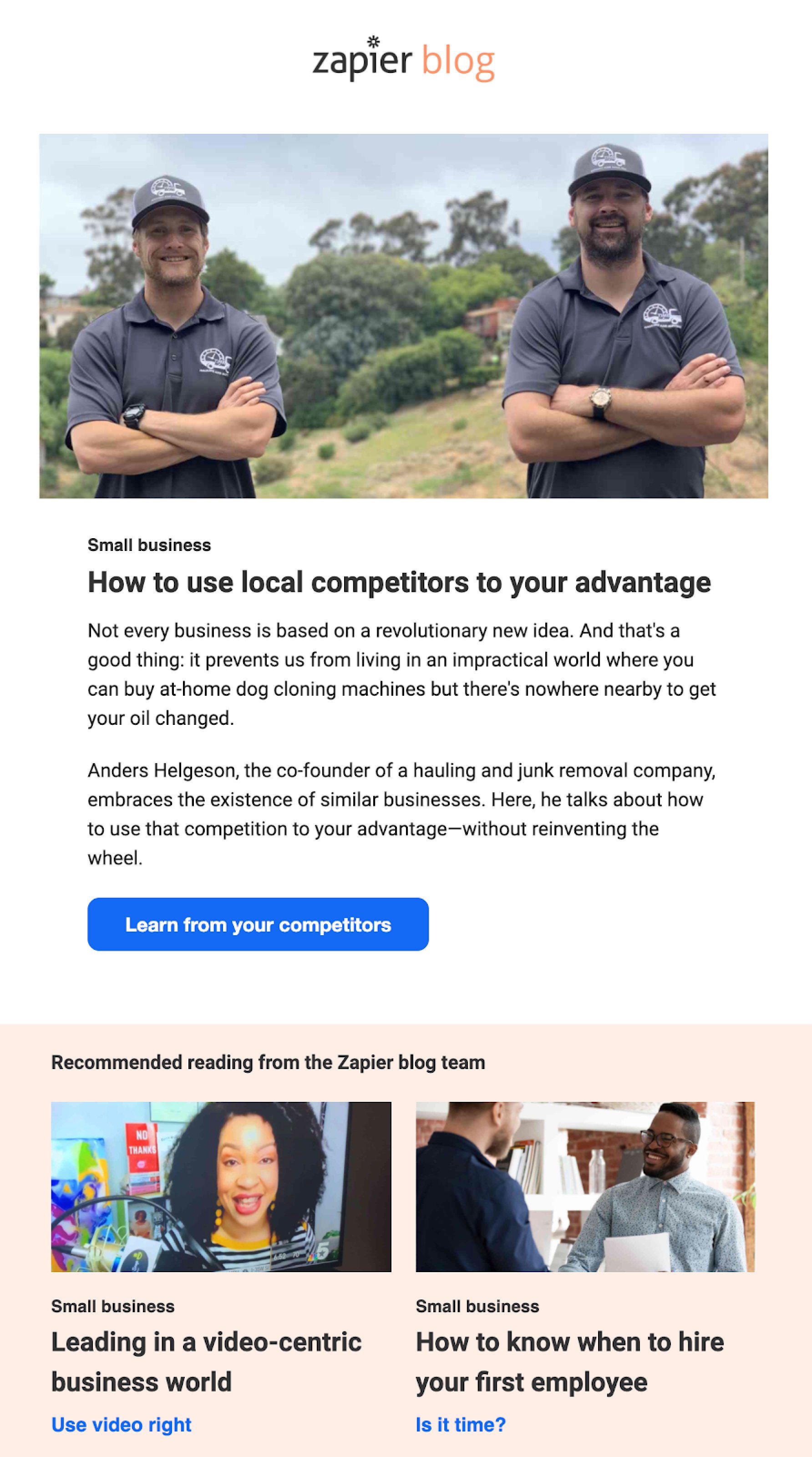
Example 2. Emails that sponsor your next travel
Travel bloggers love email marketing. Why? Because they know that if they collect people that enthusiastically follow them around the world, they can use turn that following into travel funding.
Travel bloggers profit from their blog by integrating ads, sponsors, affiliate links and brand collaborations. Some use the skills they’ve learned as a so-called digital nomad to create (video) courses, ebooks or host offline workshops.
Look at travel fan Michael Turtle, who documents his experiences abroad and shares the lowdown on the top destinations, the best transport solutions and stories from his travels. His emails start with a personal message, before sharing links to the top articles of the week.

Example 3. Using email marketing to give back
Meet Stephanie St.Claire, a life strategist and personal advisor. She uses email marketing to promote her blog and services, but she also shares her own experiences, along with strategies that help her to cope with personal and professional challenges.
What sets her apart is her willingness to be honest and authentic with her subscribers. In the example below, she shares how she has found this month challenging, and then goes on to share advice that works for her.
Not only is this a great example of how to give back to the community by offering free advice, but it also shows that as a blogger, you get to choose how you want to use your email campaigns.
Use your email platform to share milestones, disappointments, things you’re hyped about, AHA-moments, learnings—anything that could resonate with your fan base.
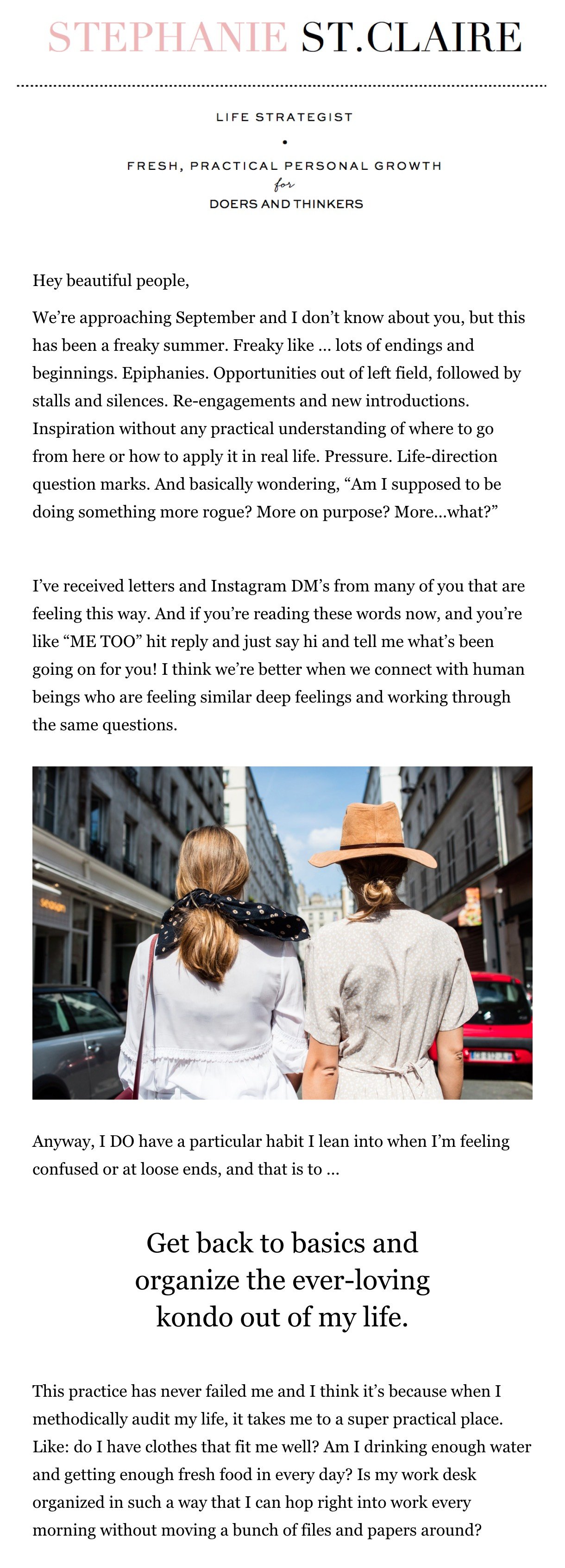
Example 4: The professional handbook
Entrepreneurs and business owners are busy people! But they constantly have their eyes peeled for new resources that can help them and their business. Enter: the blog for professionals.
In the example below by ‘the Goal Mapper LLC’, you can see how the blogger has gone for a sleek, minimalist and professional email design. Knowing that her subscribers will have limited time on their hands, she gets straight to the point. She adds value to the content by sharing a free downloadable checklist, and adds a link to the new article on her site, with a brief description of what it’s all about.
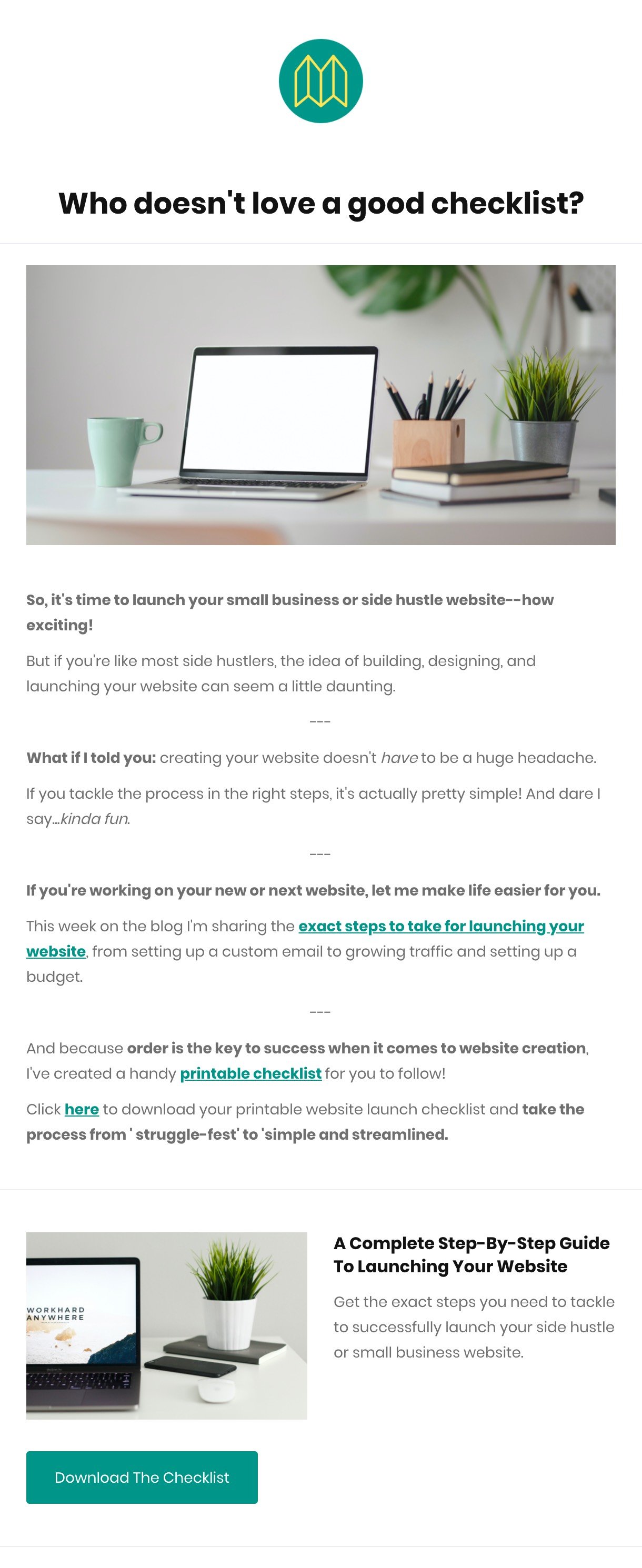
Example 5: The book blogger
Bookworms, listen in! The reading communities are constantly looking for new novels to get their mitts on, and they’ll often use blog articles as a guide, when choosing new material. If you’re a book lover, this is a great opportunity to build a following by sharing your top reads and reviews.
In the blog newsletter ‘Never enough Novels’, they announce that it’s their 5-year anniversary of running the blog, and they celebrate by sharing their monthly book recommendations, as well as links to other recent posts, in case their subscribers have missed them.
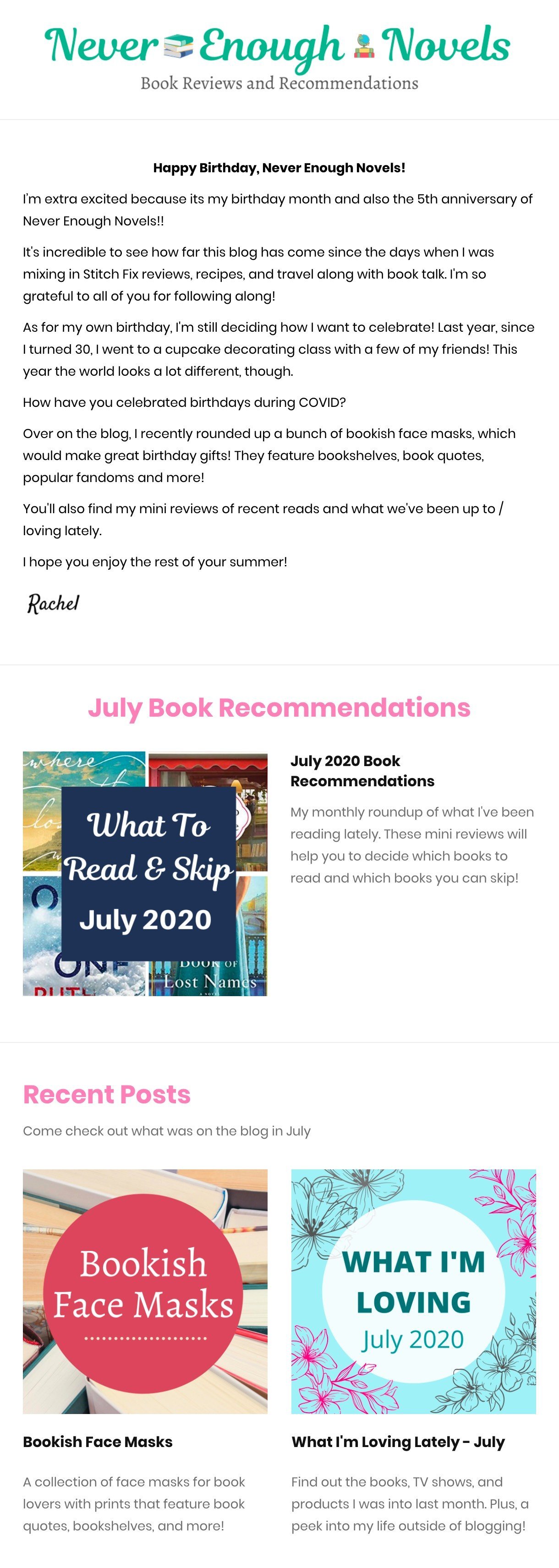
Example 6: The sewing squad
Sewers and knitters, this one’s for you! You can keep your subscribers updated with new patterns and techniques, and share quick tips to help each other along.
We’re loving this newsletter design by Mega Coven Art. There are lots of different articles listed, to pique the subscriber’s interest. Sure, they might not care about ‘5 good sewing habits for beginners’, but their eyeballs might pop when they see ‘How to make Cara Dune ribbed sleeves’. You can hedge your bets by including links to several different blog articles, so that there’s something for everyone.
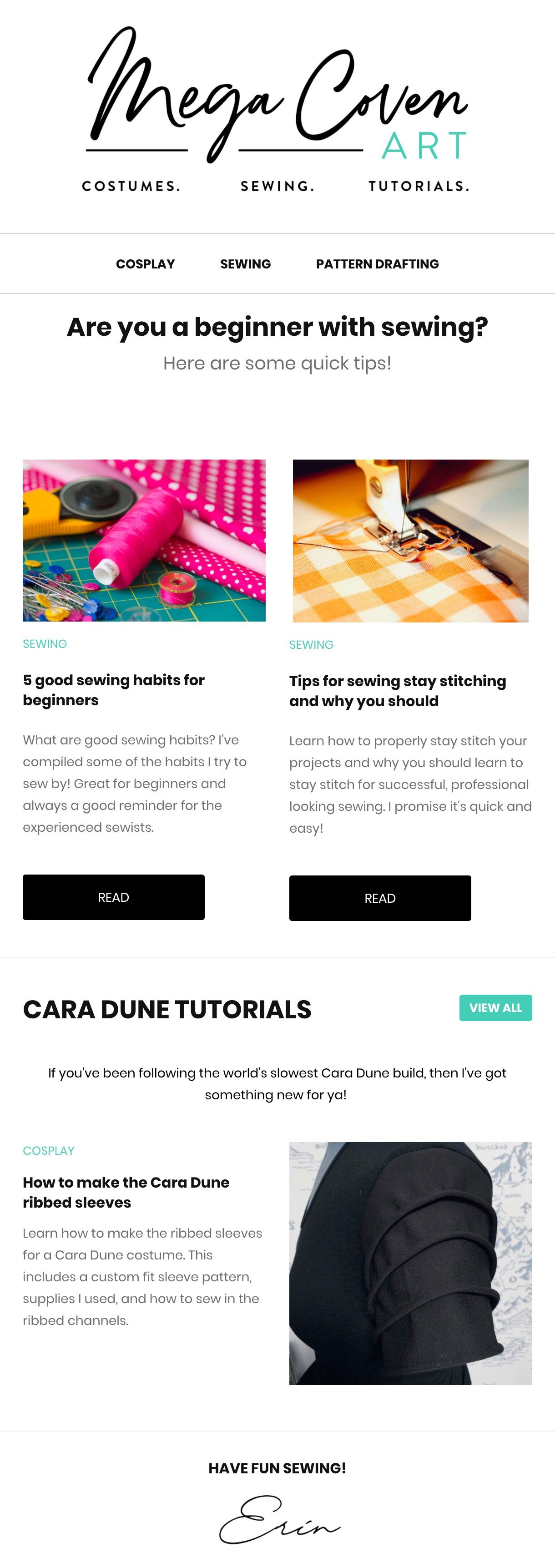
Special: 4 ways to increase your blog traffic
Have you checked off all your todos?
By now, you should have sent out a couple of blog emails and gathered your first learnings about what your readers like (and dislike).
Once you’ve got the hang of creating newsletters, you can look into special blogger email campaigns.
These one-time campaigns are an addition to your regular newsletters and focus on one specific goal. Here are some ideas...
1. Drive more visitors
People that sign up for your newsletter are engaged readers. They want to get reminded of your content and are far more likely to share your stuff with their friends. Though some will share your content on their own, the majority will read it and move on.
A giveaway or contest can get those passive people moving.
Think of a price that people would love to win and then craft your email campaign around this. For bloggers, this could be a consultation call, workshop invitation, goodie bag giveaway or personal meetup.
Your email series can start with an announcement email, a couple of reminder emails and finally the big winner reveal.
We love this big winner reveal by SoFly Ltd:
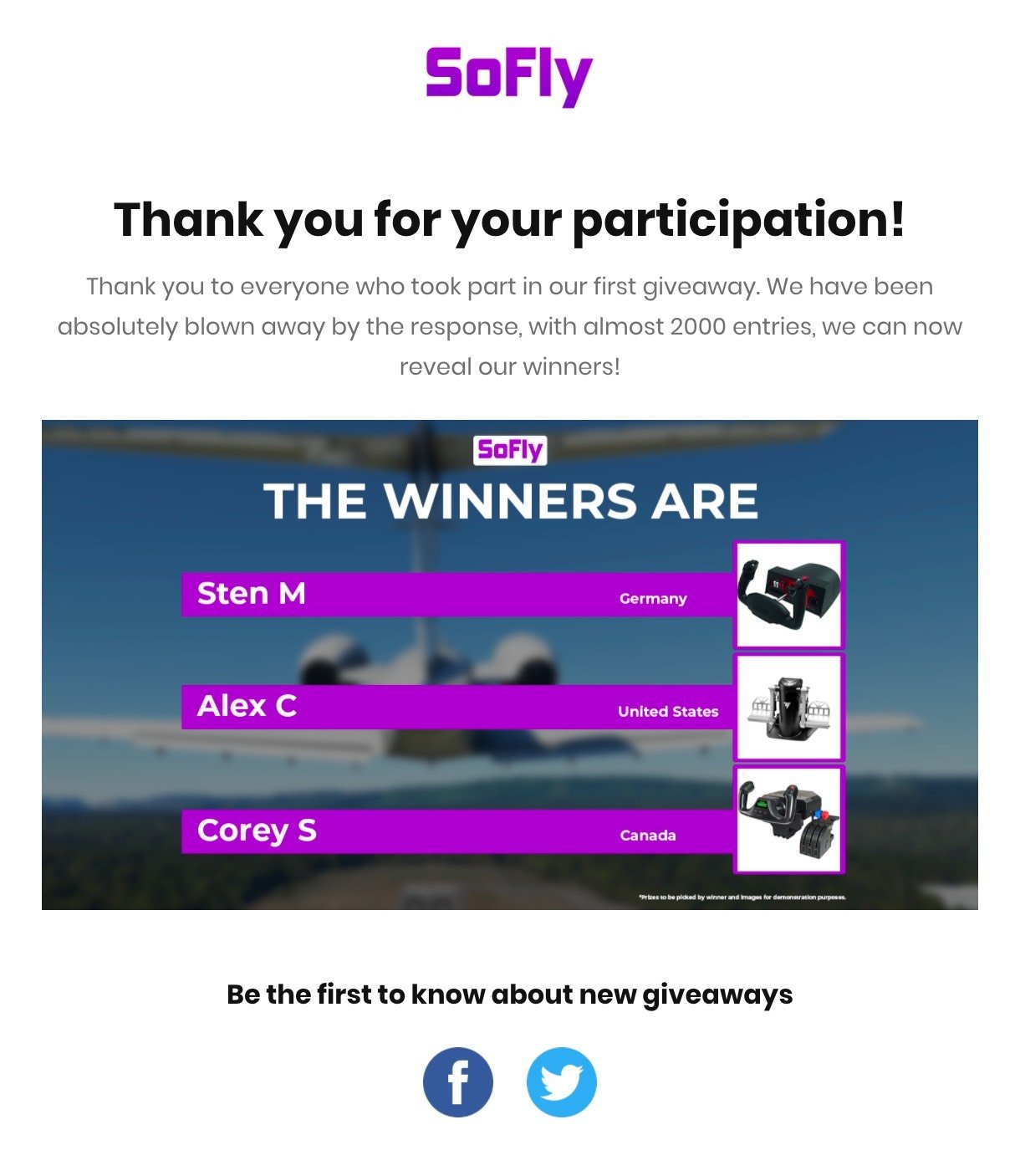
2. Increase reader engagement
Because of the personal nature of email marketing, it makes a lot of sense to use it to start a conversation with your readers.
See it as a two-way street! Make it a habit to ask readers all sorts of questions—from what blog topics they want to read to how they prefer to digest your content. Embedded email surveys make it easy for readers to respond.
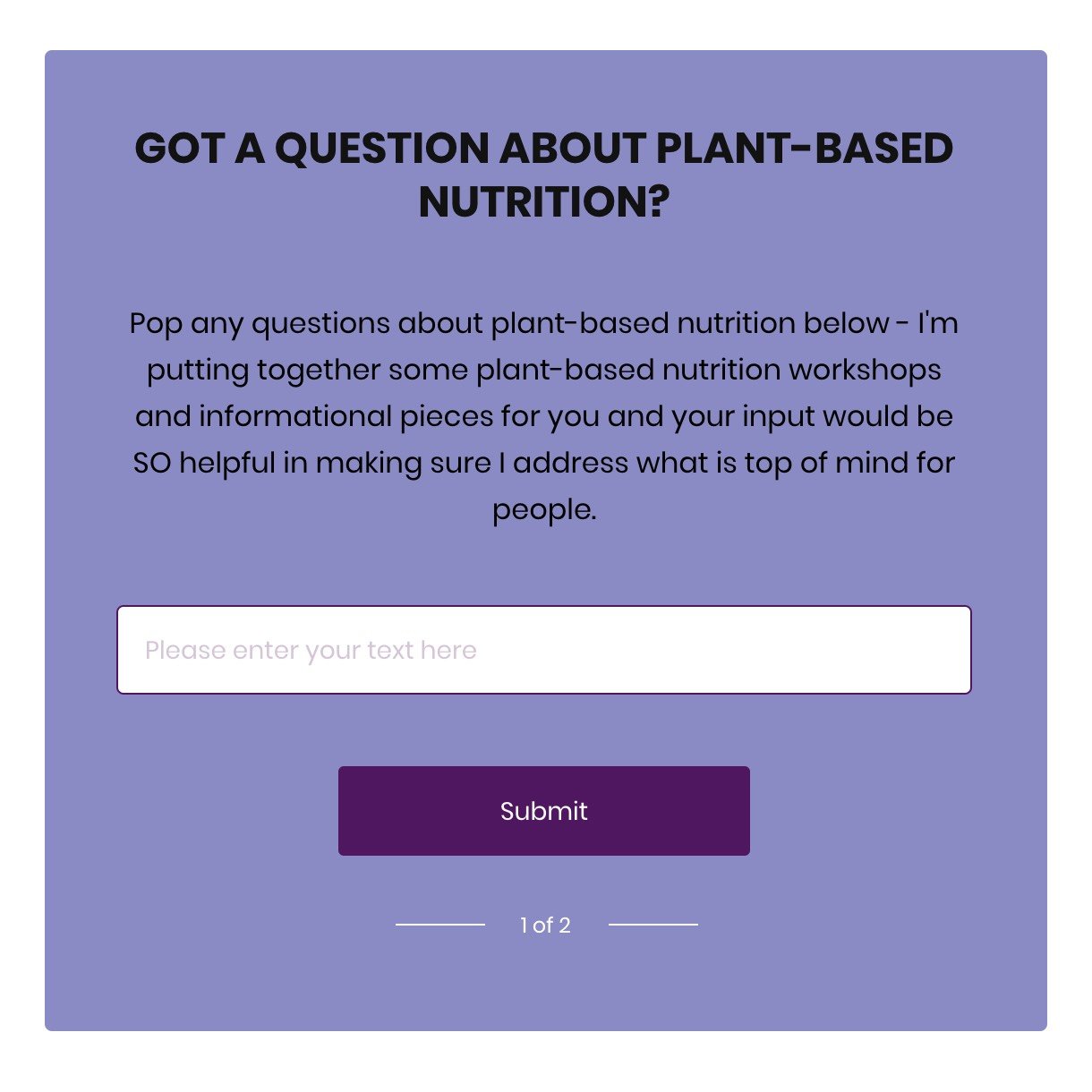
3. Set up email automation workflows
The fun part about email marketing is that a lot of things can be automated with marketing automation features. This means that you can have conversations with your followers without being physically available all the time. Meet link triggers.
Link triggers are, as the name implies, triggers that are activated when a link is clicked.
Let’s say you sent out a newsletter to promote your new course. Readers can click a button to obtain more information. A link trigger can automatically group everyone who clicked this link, and then automatically send them more emails about the course.
The only thing you need to do is set the link trigger and prepare the emails in this automated workflow. Other than that, your conversations will happen on their own and at the perfect time.
In the example underneath, link triggers can be used to segment readers into subscriber groups that are interested in nutrition, gym alternatives, workout motivation, or military-style exercise routines. The readers could then receive more tailored content, related to these particular interests.
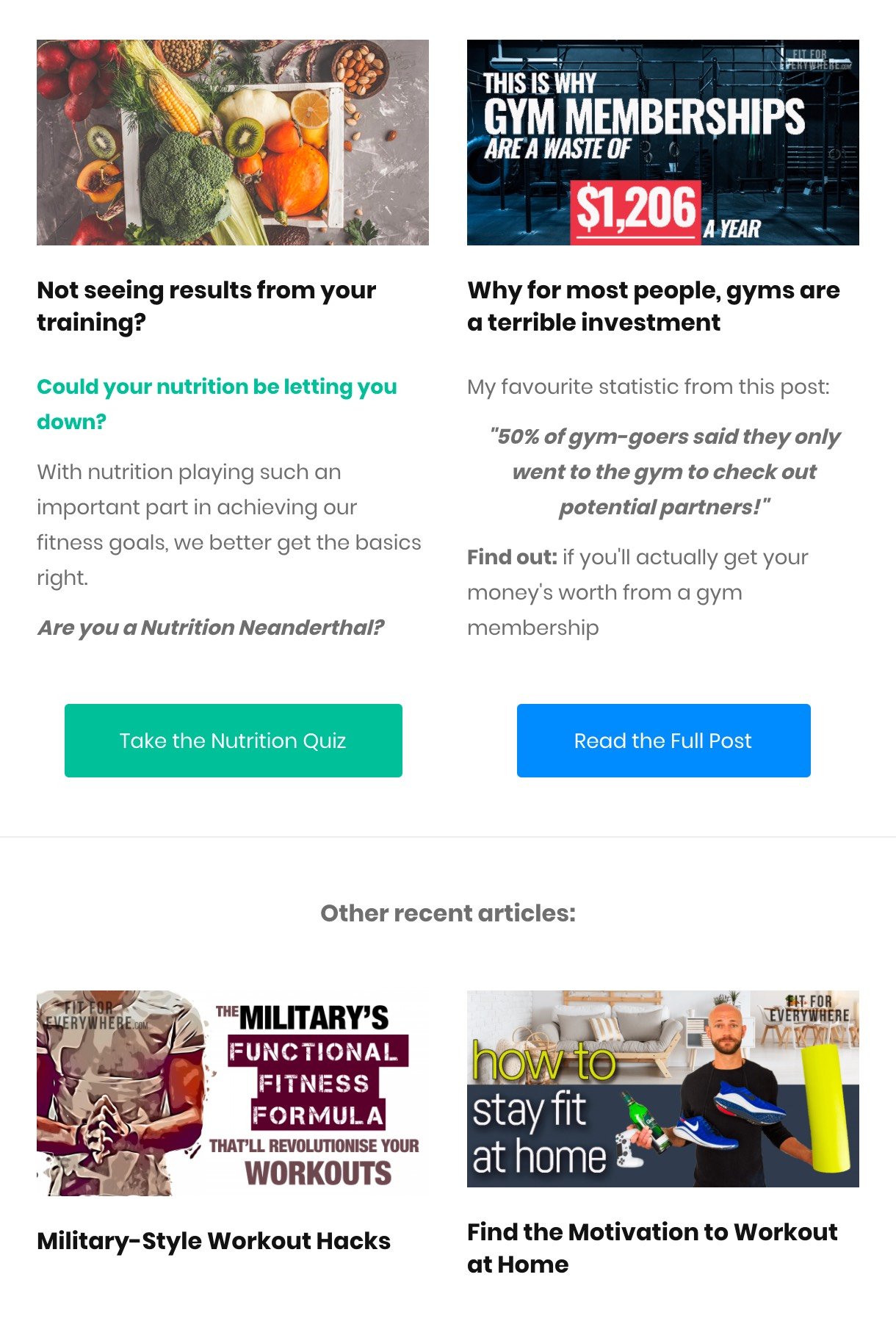
4. Attract new crowds
As a blogger, you’re always looking for new people that might like your content. Besides ranking in Google Search, guest blogging is another excellent way to reach new crowds.
Most bloggers add a link to their homepage, but why don’t you create a special landing page that is purely focused on convincing the reader to sign up for your email list? This way, you can keep in touch with your freshly caught fish. The chances of your new lead becoming an avid blog reader are much higher this way!
We love this beautiful landing page by 'Hello Peaceful Mind'.
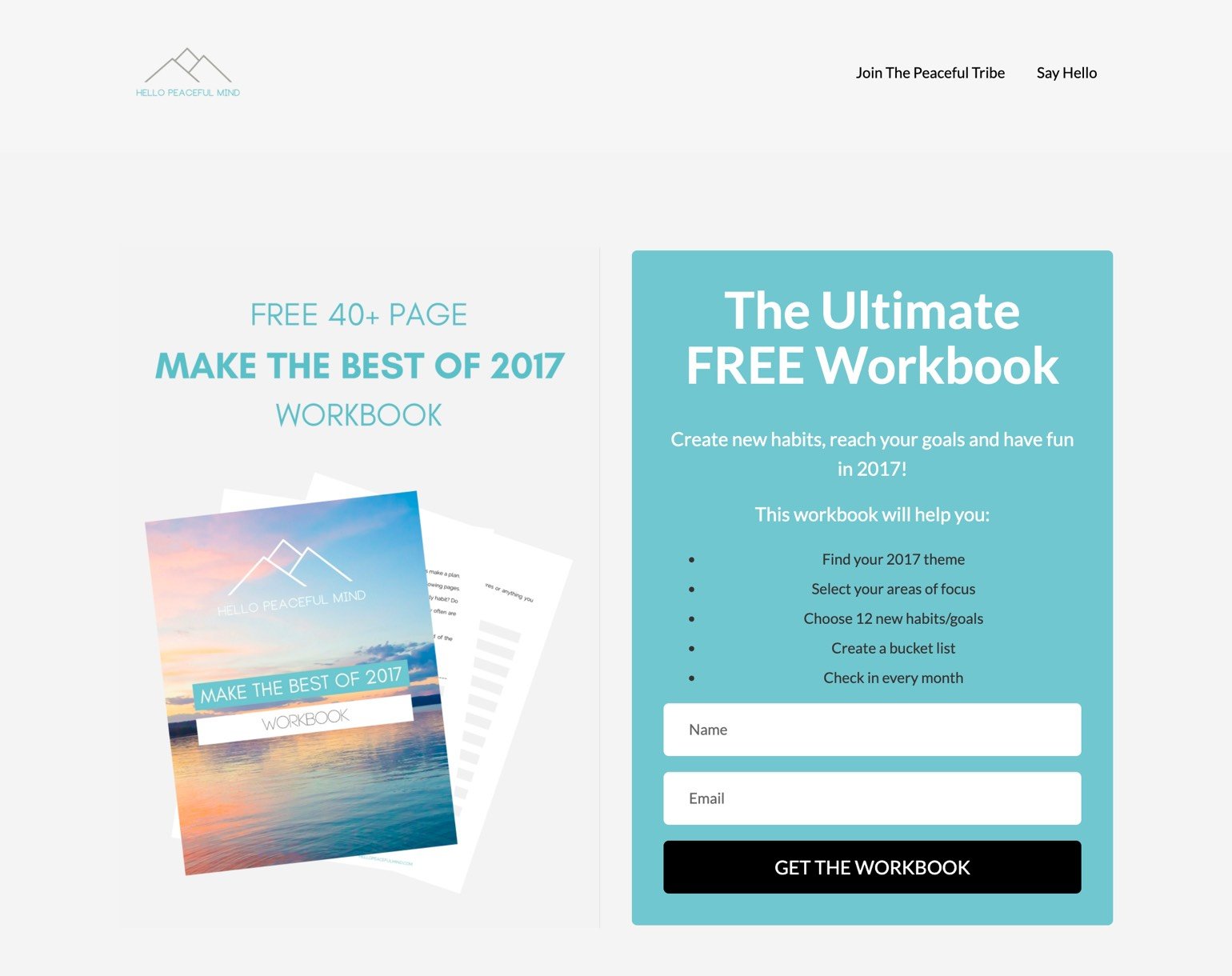
Now it's your turn! Here's your bonus checklist
We’ve taken you on the fast-track in becoming an email marketing connoisseur. You’ve learned how to collect subscribers, create your first email marketing campaign and track your successes. Now it’s up to you to finesse this new craft and boost your blog traffic.
To recap, here's your handy checklist:
Choose an email marketing service provider that's right for you
Create a signup form for your newsletter, and integrate it on your blog and social media pages
Brainstorm and create an incentive to boost signups
Create an ad-free double opt-in email
Create your personal welcome email
Define your unique communication style for your emails, and create a beautiful newsletter template
Come up with content for your very first newsletter
Optional: set up an RSS campaign
Note what subject line experiments you’d like to try
A/B test different subjects and sender information
How are you going to kickstart your blogger email marketing campaign?
Editor's note: This guide has been updated with new blogging newsletter examples.
Create your first blogger campaign in minutes!
Our free plan includes easy-to-use tools to get you started like drag & drop editors, pop-ups, landing pages, email automation, surveys and more!
